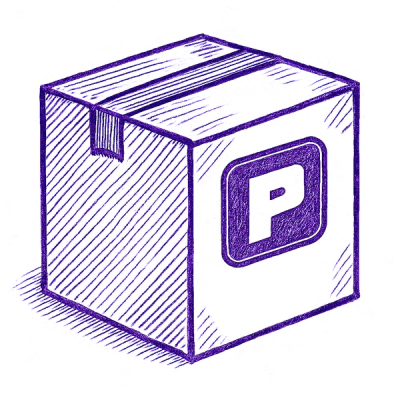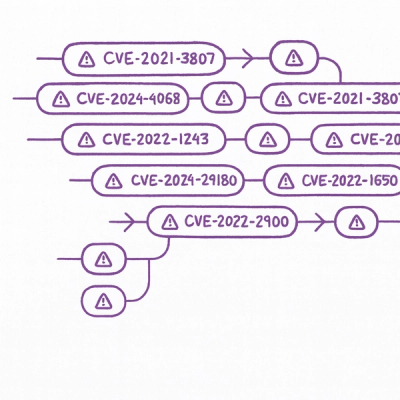
Security News
New Website “Is It Really FOSS?” Tracks Transparency in Open Source Distribution Models
A new site reviews software projects to reveal if they’re truly FOSS, making complex licensing and distribution models easy to understand.
SeoHelper is a set of helpers for rendering page-specific <title> tag, common <meta /> tags and <link rel='image_src' /> tag.
It contains not only a set of tag() helper wrappers, but can also help you doing things like
<title> and corresponding meta-tags or link-tagsPull requests are welcome.
Add this to your Gemfile:
gem 'seo_helper', '~> 1.0'
If you want to use the edge version on Github, specify the :git option.
gem 'seo_helper', '~> 1.0', :git => 'git://github.com/xdite/seo_helper.git'
And run
bundle install
to install this plug-in.
After installation, add config/initializers/seo_helper.rb into your Rails application, specifying the basic configuration like this:
SeoHelper.configure do |config|
config.site_name = "My Awesome Web Application"
end
Please specify at least the site_name, or SeoHelper will take the class name of your Rails application as default.
Don't forget to restart your Rails application.
It's always been a complex job to render a pretty title and put it in both the <title> tag and the title meta tag. With SeoHelper, you can easily set and render the title text.
First, put this in your layout file, between <head> and </head>:
<%= render_page_title_tag %>
You can replace the hard-coded <title> tag with this helper.
Now visit any page of your application, you'll see that the browser's title will be the site_name that you specified (or the application's class name if not specified).
To specify the title of current page in an controller action, for example, in the Articles#show action, use set_page_title
def show
# ...
set_page_title @article.title
end
Now visit any article, you'll see the title becomes
Article Title | My Awesome Web Application
The site_name is still a part of the title text.
If params[:page] exists it'll automatically be appended to the title. For example, in Articles#index, when you visit the 2nd page, you'll see the title becomes
Article Index - Page 2 | My Awesome Web Application
For SEO, you may want to put some <meta> tags and <link rel="image-src" /> tag in your webpage. With SeoHelper, you can easily do these things.
First, put this in your layout file, between <head> and </head>:
<%= render_page_title_meta_tag %><%# This might be unnecessary %>
<%= render_page_description_meta_tag %>
<%= render_page_keywords_meta_tag %>
You can replace the hard-coded <meta> tags with these helpers.
To specify the description and keywords of current page in an controller action, for example, in the Articles#show action, use set_page_description
def show
# ...
set_page_title @article.title # same as <title> tag
set_page_description @article.excerpt # or @article.content.truncate(100)
set_page_keywords @article.tags # or @article.keywords
end
Now visit any article, and open it's source, you'll see these meta tags:
<meta name="title" content="Article Title | My Awesome Web Application" />
<meta name="description" content="Lorem ipsum dolor sit amet, ..." />
<meta name="keywords" content="faketext,lorem,ipsum" />
If set_pages_keywords receives an array, it'll convert the array to a string joined with a single comma (',').
<link rel="image_src" /> tagThis tag tells search engine what the related image of this page is. To render this tag, put render_page_image_link_tag in your layout file, between <head> and </head>:
<%= render_page_image_link_tag %>
You can replace the hard-coded <link rel="image_src" /> tag with this helper.
To specify the title of current page in an controller action, for example, in the Articles#show action, use set_page_image
def show
# ...
set_page_image @article.excerpt_image_url
end
Now visit any article, and open it's source, you'll see this link tag:
<link href="http://www.example.com/articles/123/the-excerpt-image.jpg" rel="image_src" />
Sometimes you may want to use the page title, description, keywords and the image url. Say you're working with OpenGraph Meta tags, you may re-use them in your view:
<meta property="og:title" content="<%= page_title %>"/>
<meta property="og:description" content="<%= page_description %>"/>
<meta property="og:image" content="<%= page_image %>"/>
You may also want to use our OpenGraphHelper, too.
Sometimes you just want to skip SEO tags when their contents are empty. This is the default behavior of SeoHelper, that is, if you've never set_page_description to something in a request flow, the meta description tag will not be rendered.
If you want to force SeoHelper to render a default description meta tag, keywords meta tag, or image_src link tag, you can explicitly tell SeoHelper with configure block, in the initializer:
SeoHelper.configure do |config|
# ...
config.skip_blank = false
config.default_page_description = "This is a really really awesome website"
config.default_page_keywords = "hello,world,yay"
config.default_page_image = "http://www.example.com/title.png"
end
Then, when page description, keywords or image was not specified, SeoHelper will fallback to default text.
While SeoHelper provides set_page_XXX and render_page_XXX_meta_tag helper pairs, it is still possible to render these meta tags directly, with the corresponding XXX_meta_tag helpers, the title_tag helper and the image_src_link_tag helper.
For example,
<%= title_tag("Hello! World") %>
<%= description_meta_tag("Lorem ipsum dolor sit amet!") %>
<%= image_src_link_tag("http://www.example.com/title.png") %>
yields
<title>Hello! World</title>
<meta name="description" content="Lorem ipsum dolor sit amet!" />
<link rel="image_src" href="http://www.example.com/title.png" />
You can also add Site Name to the customized title, just put true as the second argument. For example, if you set site_name to My Awesome Web Application, then
<%= title_tag("Hello! World", true) %>
yields
<title>Hello! World | My Awesome Web Application</title>
which applies the default format of site name in page title, and thus customizable (see below).
The page number format and site name format in a page title are customizable, via the configure block. They're basically lambda blocks, and invoked dynamically during runtime.
The default format of Page Number in Title is:
Title - Page X | My Awesome Web Application
Changing the page number format by specifying a new lambda block:
SeoHelper.configure do |config|
config.pagination_formatter = lambda { |title, page_number| "#{title} - Page No.#{page_number}" }
end
Now you'll get
Title - Page No.X | My Awesome Web Application
as your page title.
The default format of Site Name in Title is:
Title | My Awesome Web Application
Changing the site name format by specifying a new lambda block:
SeoHelper.configure do |config|
config.site_name_formatter = lambda { |title, site_name| "#{title} « #{site_name}" }
end
Now you'll get
Title « My Awesome Web Application
as your page title.
This software is released under the MIT License.
Copyright (c) 2011- Techbang
Permission is hereby granted, free of charge, to any person obtaining a copy of this software and associated documentation files (the "Software"), to deal in the Software without restriction, including without limitation the rights to use, copy, modify, merge, publish, distribute, sublicense, and/or sell copies of the Software, and to permit persons to whom the Software is furnished to do so, subject to the following conditions:
The above copyright notice and this permission notice shall be included in all copies or substantial portions of the Software.
THE SOFTWARE IS PROVIDED "AS IS", WITHOUT WARRANTY OF ANY KIND, EXPRESS OR IMPLIED, INCLUDING BUT NOT LIMITED TO THE WARRANTIES OF MERCHANTABILITY, FITNESS FOR A PARTICULAR PURPOSE AND NONINFRINGEMENT. IN NO EVENT SHALL THE AUTHORS OR COPYRIGHT HOLDERS BE LIABLE FOR ANY CLAIM, DAMAGES OR OTHER LIABILITY, WHETHER IN AN ACTION OF CONTRACT, TORT OR OTHERWISE, ARISING FROM, OUT OF OR IN CONNECTION WITH THE SOFTWARE OR THE USE OR OTHER DEALINGS IN THE SOFTWARE.
FAQs
Unknown package
We found that seo_helper demonstrated a not healthy version release cadence and project activity because the last version was released a year ago. It has 1 open source maintainer collaborating on the project.
Did you know?

Socket for GitHub automatically highlights issues in each pull request and monitors the health of all your open source dependencies. Discover the contents of your packages and block harmful activity before you install or update your dependencies.

Security News
A new site reviews software projects to reveal if they’re truly FOSS, making complex licensing and distribution models easy to understand.

Security News
Astral unveils pyx, a Python-native package registry in beta, designed to speed installs, enhance security, and integrate deeply with uv.

Security News
The Latio podcast explores how static and runtime reachability help teams prioritize exploitable vulnerabilities and streamline AppSec workflows.